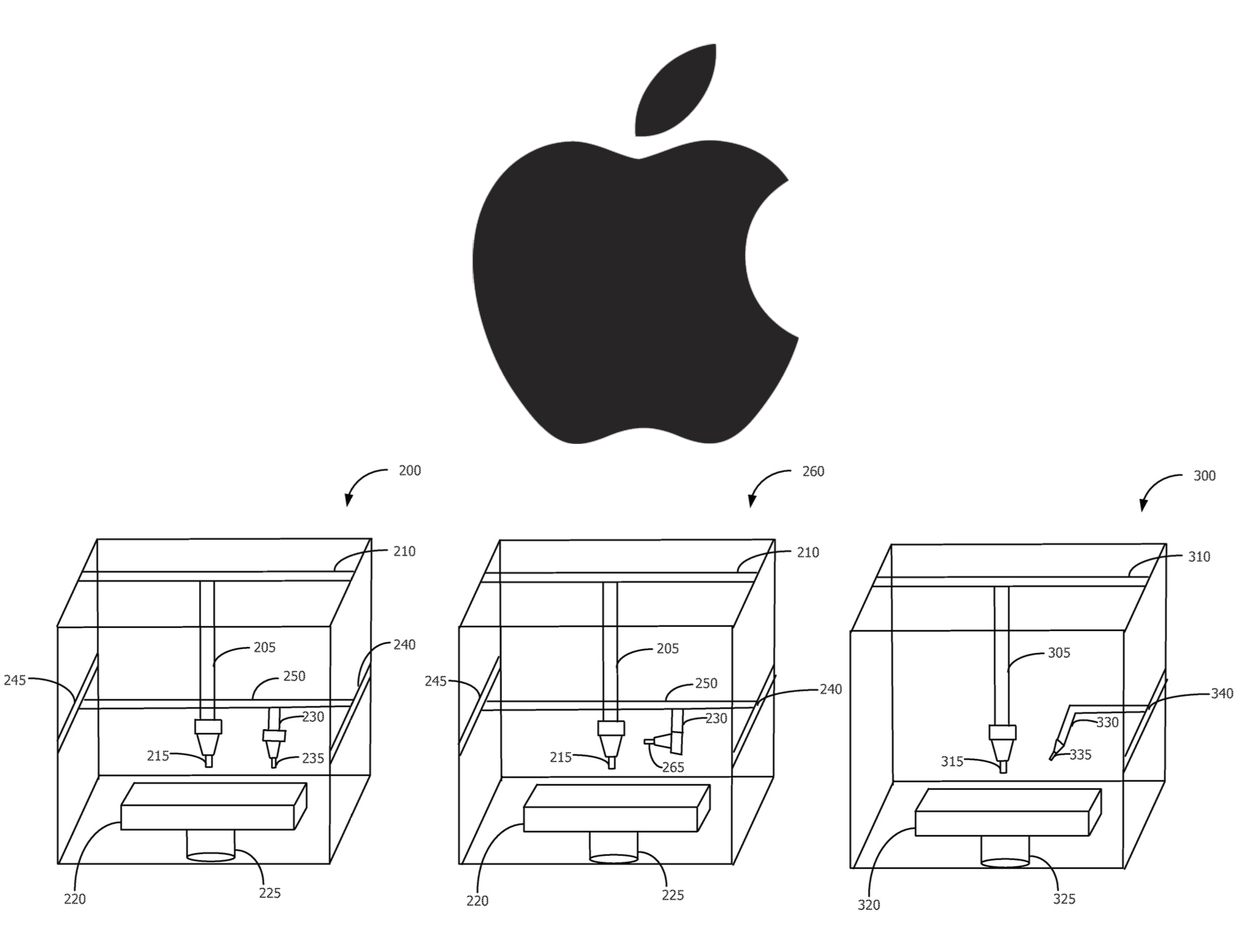
The big buzz this week was the discovery that Apple applied for a patent for 3D printing. But when the details are examined, it’s not really a 3D printer.
USPTO patent application (note this is an application, not a patent: it may be denied) number 2015/0343,704 is entitled, “Method And Apparatus For Three Dimensional Printing Of Colored Objects”. And, upon reading the patent, that’s exactly what it is: a method of printing color objects. Not a printer, per se.
There are few practical methods of producing full color 3D prints these days. The only two we’re aware of that can properly produce full, RGB color textures on 3D print surfaces are:
MCOR’s paper process, in which the edges of prints are colored on paper feedstock before production in the MCOR Iris 3D printer. When the scrap is removed, these colored edges reveal the textured surface. This process works very well and is relatively low cost – for industry, not for individuals.
3D Systems’ ProJet technology adapted from the older ZCorp process, in which a fine powder bed is impregnated with colored binder, layer-by-layer to form fully colored objects. This is the most popular method of producing full color textures on 3D prints, and has several startups mimicking this process.
Now Apple’s patent application describes an entirely different process – in fact a set of processes, and they’re not explained in sufficient detail for us to assess whether this will work or not. In fact, they say:
As part of this description, some of this disclosure’s drawings represent structures and devices in block diagram form in order to avoid obscuring the invention. In the interest of clarity, not all features of an actual implementation are described in this specification. Moreover, the language used in this disclosure has been principally selected for readability and instructional purposes, and may not have been selected to delineate or circumscribe the inventive subject matter, resort to the claims being necessary to determine such inventive subject matter.
The gist of their proposal is to have two print heads: one for depositing material (and sometimes colored material) and the other for applying color to 3D printed material. There are several approaches described:
A second toolhead is fixed to move with the primary toolhead. The “color” toolhead includes a “permanent marker” that applies coloration as printing proceeds.
The second toolhead could include a “rotatable nozzle” to provide an ability to apply multiple colors.
The second “color” print head is described as an “articulated” “robotic arm”. From this one can imagine this second printhead roaming around print layers during print operations, spitting ink or paint at portions of the print.
A rotating platform spins the print around to provide access for a color toolhead to apply coloration.
A robotic arm with appropriate toolheads can sand or polish the printed object’s surface prior to applying color. The robotic arm could be the same as mentioned above with a toolhead swap.
As you can now understand, there is no 3D printer here. It is simply a set of methods a 3D printer might use to produce color objects.
What does this mean for Apple and the rest of us? That’s a story for tomorrow.
Via USPTO

